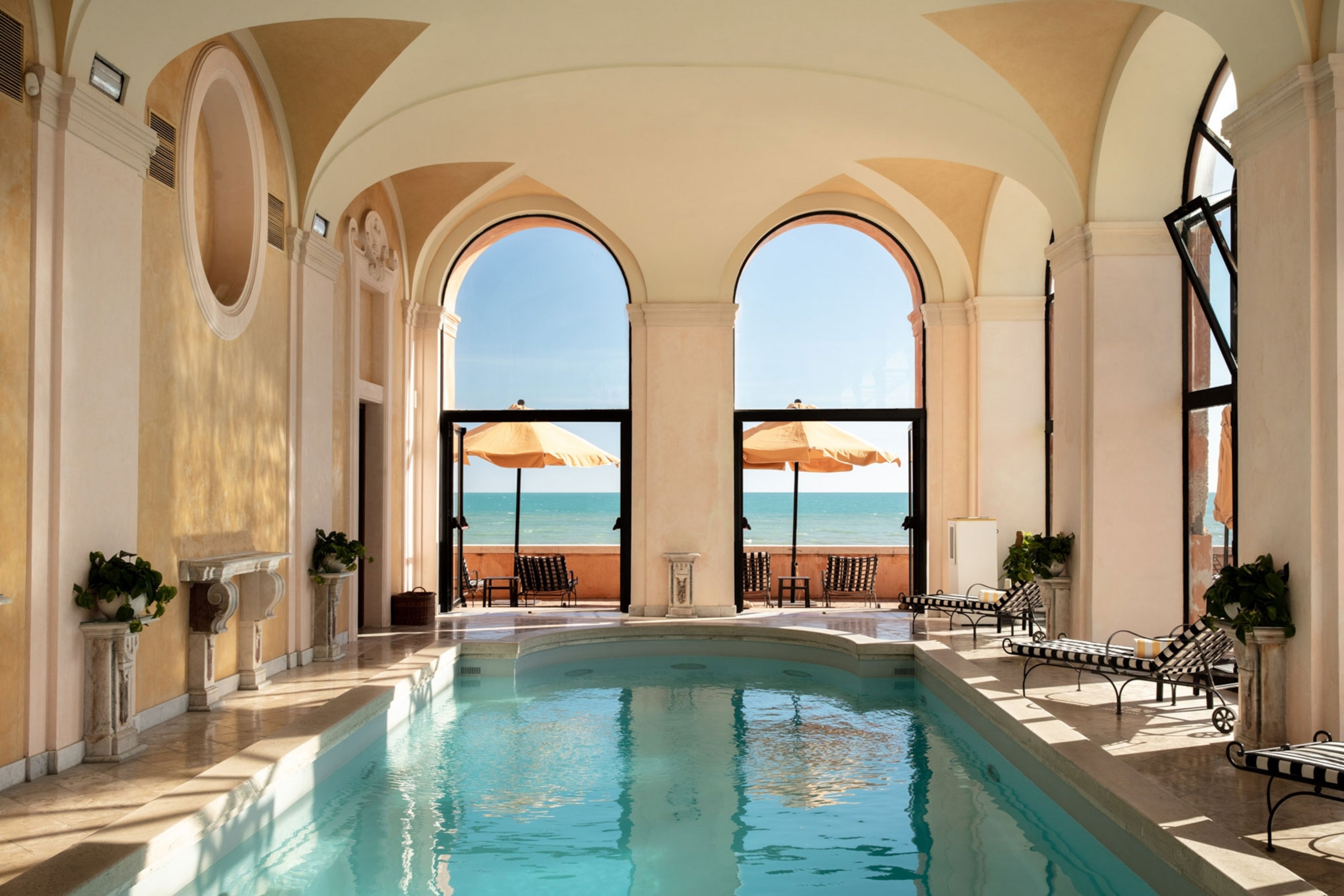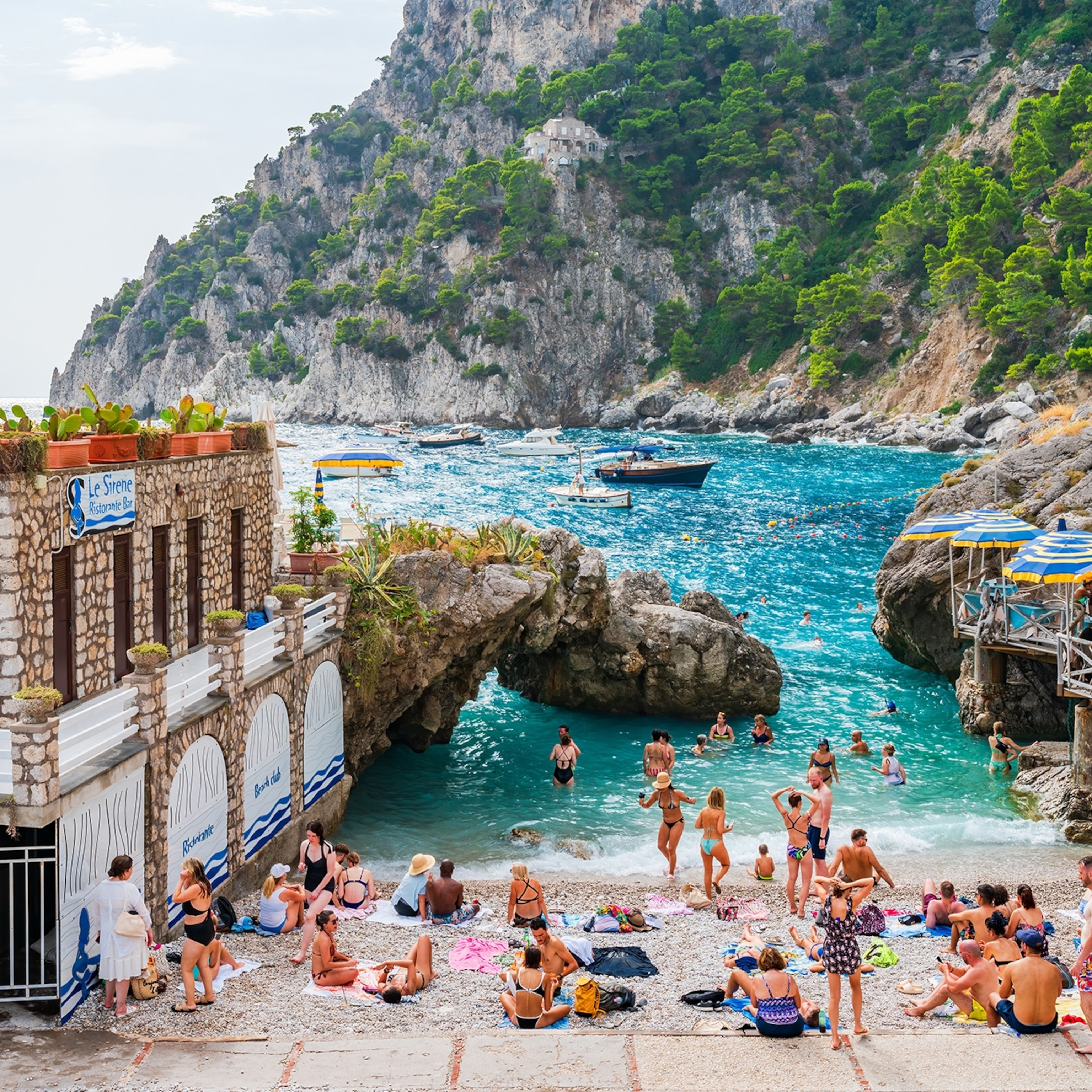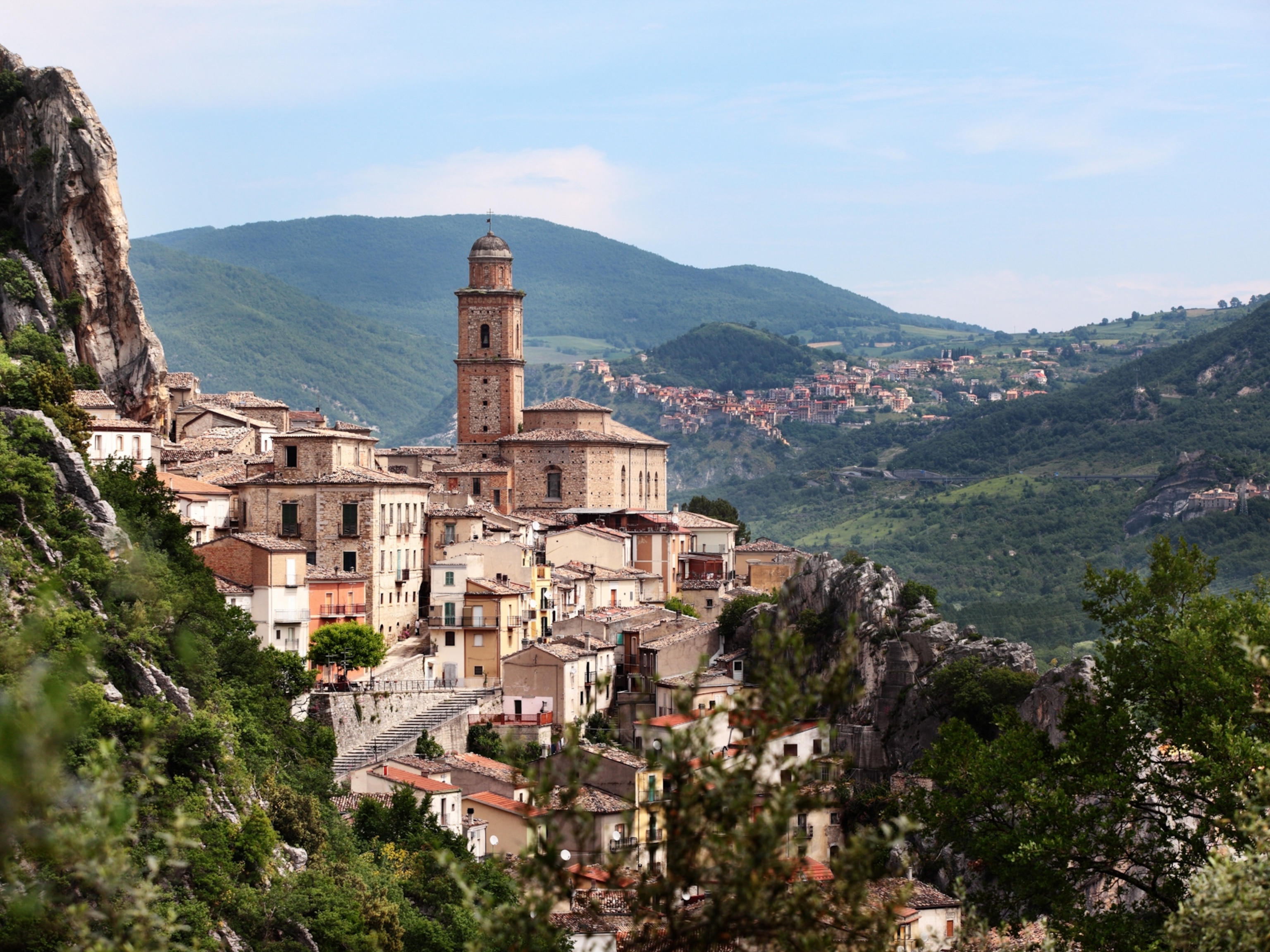10 must-do experiences in Italy’s Lazio region
Rome, the Eternal City, radiates its deliciousness and rich history beyond its walls to the Lazio region, where travelers can discover archaeological wonders, vineyards, charming villages, and a spectacular coastline.

Italy's central region, Lazio is home to Rome, the capital of the region and the country. Seven million travelers visit Rome annually, flowing through the Eternal City to see the blockbuster sights such as the Colosseum and Vatican City’s Sistine Chapel, and to enjoy its delicious culinary traditions.
Rome’s nickname, Caput Mundi (Capital of the World), was inspired by the great influence the city and the foregone empire have held throughout the world for thousands of years. Certainly, its rich history and culture extend to Lazio’s five provinces: Frosinone, Latina, Rieti, Rome, and Viterbo.
Travelers can discover a range of treasures to experience La Dolce Vita (The Sweet Life) in this region, which includes exploring its fascinating archaeological sites, opulent palaces, enchanting islands, quaint medieval villages, and beautiful coastlines. Here is what should not be missed.
1. Stroll the Appian Way
Less than two miles from Colosseum crowds in Rome, the 8,650-acre Appian Way Regional Park is the second largest urban park in Europe. Accenting the verdant landscape are remains of ancient Rome, including aqueducts and the massive cylindrical Tomb of Caecilia Metella, a mausoleum built in honor of the daughter of a Roman Consul during the first century B.C.
Located in the heart of the park, the 2000-year-old Appian Way, an ingeniously built road used by soldiers and traders, extends 350 miles from Rome to the port town of Brindisi. It was key to the success of the Roman Empire and was recently named a UNESCO World Heritage site.

A stroll or bike ride along the Via Appia’s ancient trail, shaded by umbrella pines and serenaded by birdsong, is an idyllic pleasure. For a delicious lunch, out-of-towners will be welcomed warmly at Hostaria Antica Roma, which serves dishes inspired by ancient Roman dishes, such as patina cotidiana, a tomato-less predecessor to lasagna, and tiropatina, a custard spiced with pepper.
2. Taste the region's classic pastas
Lazio’s pasta comes from simple peasant traditions with sauces made from pecorino cheese—thanks to the countryside’s sheep and guanciale, which is salt-cured pig jowl. The region’s four classic pastas are Gricia, made with guanciale, pecorino, and black pepper; Carbonara, where egg adds richness to the mix; Amatriciana, featuring tomato; and Cacio e Pepe, a vegetarian option that’s a bold mix of pecorino accented with black pepper. The base for this deliciousness is tonnarelli, a thick, square-shaped spaghetti.
For a hands-on pasta experience, join Daniela’s Cooking School, based in the chef’s home on Aventine Hill in Rome. Classes begin at the Testaccio market, continue with participants kneading and rolling dough in Daniela’s kitchen, and end with lunch in her elegant dining room.
(Related: These are the must-see sights of Italy’s Abruzzo region.)
3. Explore Ostia Antica
A half-hour train ride from Rome takes you to Ostia Antica—a crowd-free archaeological park of what was once a thriving Mediterranean port city—which reached its peak in the second century AD. Mosaics decorate remains of baths, markets, and warehouses. Theaters, temples, and humble residences offer a perspective of what everyday life was like for the common folk. While in Ostia Antica, travelers can easily visit the nearby coastal town of Ostia for a lunch of fresh seafood.

4. Toast with the best wines in Lazio
In the sixth century B.C., winemaking in Lazio began with the Etruscans who planted vines that thrived in hills of volcanic soil amidst the mild climate and Tyrrhenian Sea breezes. Roman Emperors, monks of the Middle Ages, popes, and nobility of the Renaissance followed and helped to refine Lazio’s viticulture. The region’s innovative winemakers are dedicated to honoring traditions and adopting modern sustainable practices—hand picking and organic farming—so the region’s wines truly taste of the land without additives.
Two white wines—dry light Frascati and zingy Est! Est! Est!—are the region’s signature vinos, while Cesanese del Piglio, rustic and fruity, is Lazio’s classic red wine. Rome’s enotecas (wine bars) are ideal spots for tastings, such as L’Angolo Divino near the Campo dei Fiori market, where the host, Massimo, can offer his expertise about excellent small local producers.
For another way to experience the wine in Lazio, visit the picturesque town of Frascati. Azienda Biologica De Sanctis, a family-run winery since 1816, offers tastes of their award-winning vintages and olive oils. Further south, in the province of Latina, discover Marco Carpineti’s wine estates. Tastings of his sparkling and robust red wines come with adventurous activities such as e-bike riding and ziplining.
(Related: Here are 10 must-do experiences in Sicily.)

5. Hop on a ferry to Ponza
For an amazing adventure, travelers can take a ferry to the Pontine Islands, an archipelago of six islands located in the Tyrrhenian Sea just 23 miles south of San Felice Circeo. The largest island, Ponza (about 5.5 miles long) welcomes tourists with a lively harbor of restaurants, bars, and gelaterias. It’s the ideal place for boating along a coastline with a mix of chalk-white cliffs, emerald grottoes, and mysterious inlets. Spend a couple of days here to enjoy Ponza’s rocky beaches and explore the smaller islands, including Ventonone Island, where underwater explorers can snorkel and scuba dive in the island's marine reserve.
6. Stop and taste the artichokes
Artichokes (carciofi) grow abundantly in the fertile plains of Lazio. They are usually found on restaurant menus prepared alla Romana (braised and stuffed with a local oregano-like herb mentuccia) or alla Giudia (flattened and deep fried in a style created centuries ago in Rome’s Jewish Ghetto).
In spring, the restaurants are adorned with bouquets and towers of artichokes. Countryside festivals celebrate this revered vegetable in the villages of Sezze and Ladispoli in mid-April. They usually feature music and dancing amidst stalls serving delicious versions of artichokes.
7. Visit Tivoli’s architectural marvels
An extraordinary day trip to the hills east of Rome takes you to Tivoli, home to two UNESCO World Heritage sites, where you can immerse yourself in marvels of centuries-old architecture. Begin at Villa Adriana to discover the ruins of a masterpiece built for Roman Emperor Hadrian in the second century A.D. Part of the complex is open to visitors (about 99 acres), and includes the ruins of his “ideal city”—baths, gardens, fountains, statuary, and buildings—showcasing Greek, Egyptian, and Ancient Roman styles. Hadrian’s creation inspired the design of preceding villas, including the second Tivoli site, Villa d’Este, where people can visit the Renaissance garden filled with flowing fountains and an opulent Mannerist-style palace.
(Related: 7 must-do experiences in Italy's stunning Lombardy region.)
8. Indulge in Pecorino Romano, Per Favore
Lazio’s most famous cheese is Pecorino Romano, which is made from the milk of grass-fed ewes. Its origins go back to the days of ancient Rome when soldiers added it to farro for sustenance in battle. Pecorino Romano is found on aperitiv menus, in springtime served with fresh fava beans, and as an essential ingredient in pasta sauces native to the region. Its delicious flavor, stronger and saltier in aged versions, comes from the ewe’s diet of grass and herbs, usually thyme.
Lazio is also known for Ricotta Romana (fresh, tangy, and creamy), which is made from ewe’s whey. The Romans thank Saint Francis of Assisi for this. He's known for teaching the ricotta-making process to Lazio farmers in the 13th century.
Guided Food Tours in Rome give turophiles a chance to taste regional cheeses in the city's lively Campo dei Fiori or Testaccio markets. Travelers can also head to the northeastern hills of the region for a Cheese Farm Experience to meet a family that practices traditional farming. While visiting, plan a cheese-centric lunch in the lush countryside.
9. Uncover the riches of the Castelli Romani
Thirteen miles south of Rome, the Castelli Romani is a bucolic cluster in the Alban Hills, created by volcanos long ago, and is now home to forests, lakes, fertile farmlands, and 17 charming villages. Most famous of the bunch are Frascati, known for its wine and magnificent Renaissance and Baroque Tuscolan villas, and Castel Gandolfo, home to the Pope’s summer palace and gardens.
Delicious specialties can be found in Nemi, where strawberries from the surrounding forest abound in the spring. Ariccia is home to casual eateries called fraschette that serve porchetta (roasted pork) along with platters of cured meat and cheeses. Sports enthusiasts rent kayaks or sailboats on Lake Albano, the deepest crater lake in Italy. Other activities in the area include hiking, biking, or horseback riding through the hills and meadows of the Castelli Romani Regional Park.
(Related: These are the must-see sights of Italy's Veneto region.)
10. Unwind and relax on the Ulysses Riviera
Lazio’s southern coastline, with its curves of dramatic cliffs, enticing coves, and sparkling sea has lured travelers since Ulysses sailed by, was seduced by sorceress Circe, and stayed there for an entire year, according to Homer’s Odysseus. Now called the Ulysses Riviera, the beautiful stretch of shoreline covers about 36 miles and extends to the border of the Campania region.
In the summer, this is where a delightful scene unfolds at beach clubs with colorful umbrellas popping open on wide beaches of immaculately raked sand. Highlights of the area include the town of Terracina where ruins of a Roman theater can be found in its historic center, and above it, an impressive Temple of Jupiter Anxur. Don’t miss out on trying the locally-made Moscato di Terracina wine before you leave Terracina.
The pearl of seaside spots is the village of Sperlonga, set on a promontory, resembling a Greek village of white stone surrounded by beaches below. A walk along Sperlonga’s shore leads to a cave where Roman Emperor Tiberius once threw dinner parties (alongside remains of his villa) and the Museo Archeologico di Sperlonga, filled with massive statues of mythical scenes, such as Ulysses thrusting a spear to blind the giant cyclops Polyphemus.
Getting around
Travelers arrive in Lazio at Rome’s Fiumicino (also known as Leonardo Davinci) Airport, an international hub, or at the smaller Ciampino Airport, used primarily by low-cost carriers. Visiting Lazio’s countryside and small towns can be done via the extensive Trenitalia regional network or Cotral bus system but taking a taxi for destinations close to Rome or renting a car for exploring further away is a better, more tranquil option. Ferry service is available from Formio or Anzio to reach the Pontine Islands.
Where to stay
For Eternal City elegance, the 5-star Hotel de Russie, near Rome’s Spanish Steps, seamlessly blends classic and contemporary architecture. The hotel features a range of suites expertly designed for romantic getaways or family vacations. Guests adore slipping into the de Russie’s peaceful Secret Garden for cocktails, indulging in the luxurious spa, and calling on expert concierge services to customize unique experiences in and around Rome.
Forty minutes from Fiumicino airport, La Posta Vecchia is an ideal choice to begin or end a vacation in Lazio—with glamorous style. The boutique former 17th-century palazzo, set seaside and surrounded by beautifully landscaped gardens, was once the home of Jean Paul Getty. The property’s 21 rooms and suites, restaurant, pool, and grounds are accented with treasures from Getty’s collection, including artifacts from a Roman villa discovered during its renovation.

Relax in the countryside paradise of Casale San Pietro, an agriturismo (farm) southeast of Rome, set amidst hills of olive groves with breathtaking panoramic views. The 300-year-old farmhouse property with six exquisitely designed guest rooms, was lovingly restored by a British couple who warmly welcome travelers to experience unique points of interest, such as the medieval villages of Fiuggi and Subiaco.



_4x3.jpg)



